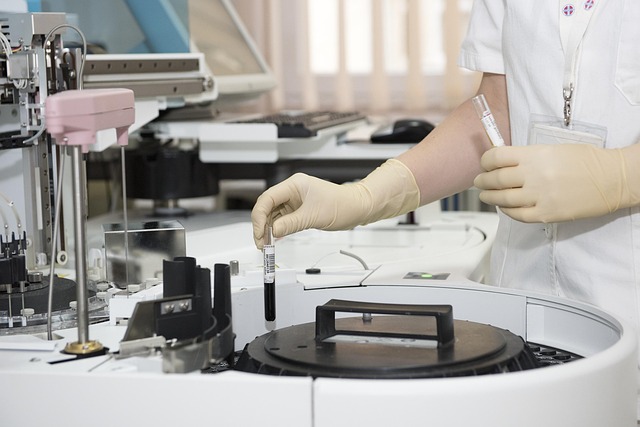Comprehensive Guide for Choosing Medical Equipment and Lab Reagents Effectively
Choosing the right medical equipment and lab reagents is crucial for ensuring accurate diagnostics, reliable research outcomes, and overall patient safety. An effective selection process involves understanding the specific requirements of your laboratory or medical facility, evaluating the quality and reliability of products, considering regulatory compliance, and balancing cost with performance. Additionally, staying informed about the latest technological advancements and supplier credibility can help streamline procurement, reduce operational risks, and enhance the efficiency of medical and laboratory operations.

Healthcare facilities and research institutions face increasingly complex decisions when selecting medical equipment and laboratory reagents. The quality and reliability of these essential components directly influence patient outcomes, research accuracy, and overall operational success. Making informed choices requires understanding various technical specifications, regulatory requirements, and compatibility factors that ensure optimal performance and safety.
Modern healthcare environments demand equipment and reagents that meet stringent quality standards while providing cost-effective solutions. From diagnostic instruments to specialized laboratory chemicals, each selection impacts workflow efficiency, accuracy of results, and long-term sustainability of healthcare operations.
Understanding the Types of Lab Reagents
Laboratory reagents encompass a vast range of chemical compounds, biological materials, and specialized solutions used in diagnostic testing, research, and quality control processes. Common categories include buffer solutions, enzyme substrates, antibodies, molecular biology reagents, and clinical chemistry components. Each type serves specific analytical purposes and requires particular storage conditions and handling protocols.
Diagnostic reagents used in clinical laboratories include immunoassay components, hematology reagents, and microbiology culture media. Research-grade reagents often demand higher purity levels and may include specialized compounds for molecular biology applications, cell culture work, and biochemical assays. Understanding these distinctions helps laboratories select appropriate reagents for their specific applications and quality requirements.
Evaluating Purity and Quality
Reagent purity directly affects analytical accuracy and reproducibility of test results. High-performance liquid chromatography (HPLC) grade reagents typically offer purity levels exceeding 99%, while analytical grade reagents maintain purity standards suitable for most routine laboratory applications. Molecular biology grade reagents undergo additional purification steps to remove nucleases and other contaminants that could interfere with DNA or RNA work.
Quality evaluation involves reviewing certificates of analysis, understanding manufacturing standards, and verifying compliance with relevant regulatory requirements. ISO certification, Good Manufacturing Practices (GMP) compliance, and adherence to pharmacopeial standards provide additional quality assurance. Regular quality control testing and proper storage conditions maintain reagent integrity throughout their shelf life.
Assessing Compatibility with Experiments
Compatibility assessment ensures reagents perform optimally within specific experimental protocols and instrument systems. Factors include pH stability, temperature sensitivity, ionic strength requirements, and potential interactions with other reagents or materials. Automated analyzers often require reagents specifically formulated for their detection systems and calibration protocols.
Method validation studies help determine reagent performance characteristics including linearity, precision, accuracy, and detection limits. Cross-reactivity testing identifies potential interferences that could affect result interpretation. Documentation of reagent specifications and performance data supports regulatory compliance and quality assurance programs.
Understanding Application Areas
Different application areas require specific reagent characteristics and performance standards. Clinical diagnostics demand reagents with established reference ranges, regulatory approvals, and demonstrated clinical utility. Research applications may prioritize reagent flexibility, custom formulations, and specialized properties for novel experimental approaches.
Therapeutic drug monitoring, infectious disease testing, cardiac markers, and hormone assays each require reagents optimized for their specific analytical challenges. Understanding intended applications helps laboratories select reagents that provide reliable performance while meeting regulatory and accreditation requirements.
Checking for Safety and Handling Requirements
Safety considerations include reviewing material safety data sheets (MSDS), understanding hazard classifications, and implementing appropriate handling procedures. Some reagents require specialized storage conditions such as refrigeration, freezing, or protection from light exposure. Proper waste disposal procedures must comply with local environmental regulations and institutional safety policies.
Personal protective equipment requirements, ventilation needs, and emergency response procedures vary depending on reagent characteristics. Training programs ensure laboratory personnel understand proper handling techniques and safety protocols. Regular safety audits and incident reporting systems help maintain safe working environments.
| Product Category | Provider | Cost Estimation (CLP) |
|---|---|---|
| Basic Clinical Chemistry Reagents | Roche Diagnostics | $40.000-160.000 per test kit |
| Immunoassay Reagents | Abbott Laboratories | $80.000-400.000 per kit |
| Molecular Biology Reagents | Thermo Fisher Scientific | $160.000-800.000 per kit |
| Hematology Reagents | Sysmex Corporation | $60.000-240.000 per kit |
| Microbiology Media | BD Biosciences | $20.000-120.000 per kit |
Prices, rates, or cost estimates mentioned in this article are based on the latest available information but may change over time. Independent research is advised before making financial decisions.
Successful procurement of medical equipment and laboratory reagents requires systematic evaluation of technical specifications, quality standards, and operational requirements. Healthcare facilities benefit from establishing vendor relationships, implementing quality assurance programs, and maintaining current knowledge of technological advances. Regular performance monitoring and cost-effectiveness analysis ensure continued optimization of laboratory operations while maintaining high standards of patient care and research excellence.
This article is for informational purposes only and should not be considered medical advice. Please consult a qualified healthcare professional for personalized guidance and treatment.




